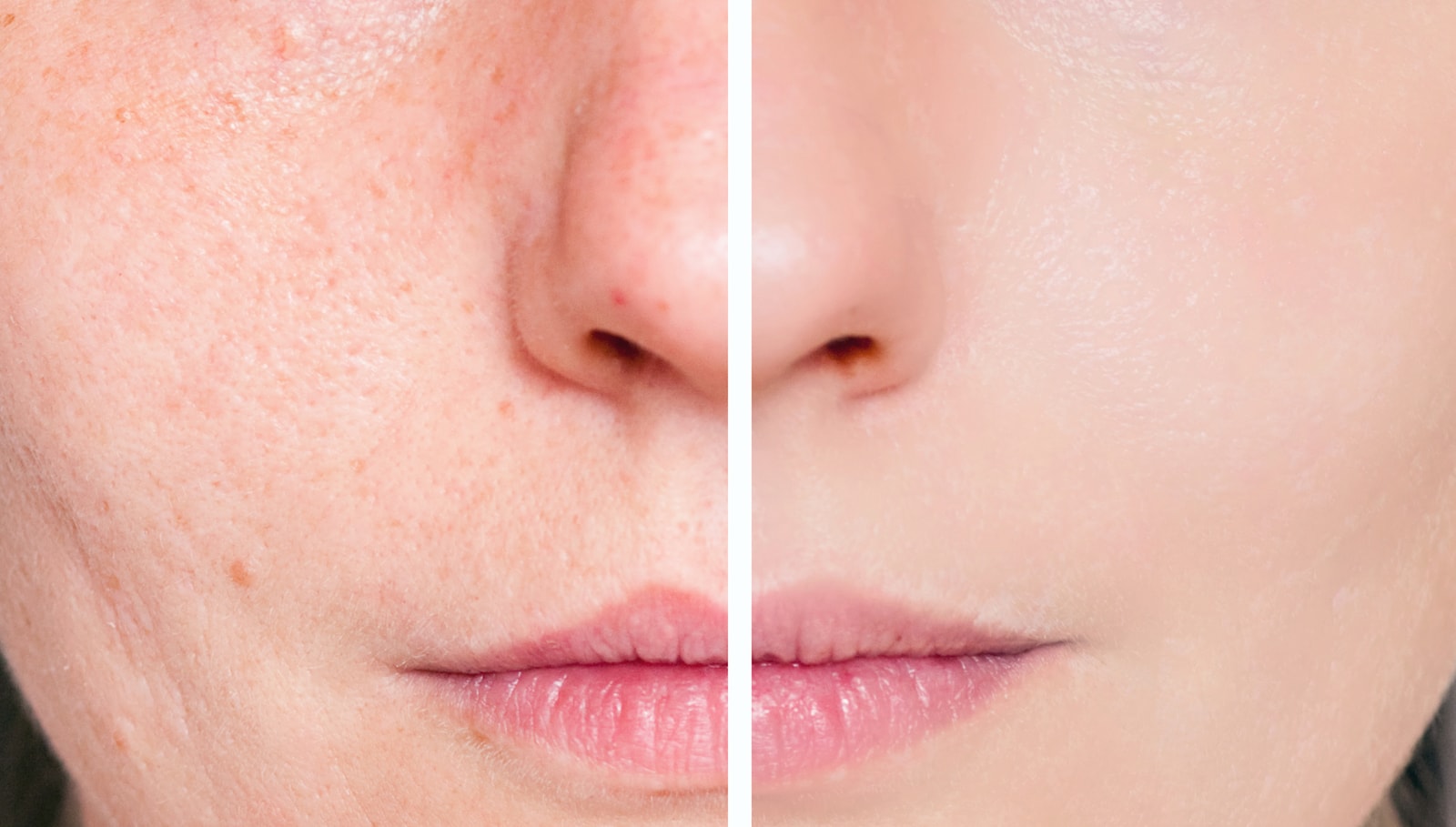
Halo hybrid fractional laser is a skin laser that delivers ablative and non-ablative wavelengths of laser energy at the same time. Ablative lasers, like CO2 and Erbium, vaporize the outer skin layers to effectively resurface and rejuvenate the skin. Non-ablative technologies like Fraxel laser are less invasive and only heat the area instead of vaporizing the skin. The hybrid approach aims to stimulate collagen production without ablative resurfacing. Halo hybrid fractional laser lets the wavelength be individually adjusted while allowing for a more customized treatment for each patient. This is a non-invasive treatment primarily used to treat the face, neck and upper chest above the décolleté. It also helps improve or eliminate acne scars. The depth and severity of these scars determines if it will take one session or multiple laser treatments.
A GOOD CANDIDATE for Halo hybrid fractional laser is:
Patients who are NOT GOOD CANDIDATES include:
Halo hybrid fractional laser treatment begins with a doctor examining the patient to determine how light or aggressive the treatment will be. A light treatment only needs topical anesthetic applied to the treated area about one hour prior to treatment. A patient who opts for a more aggressive treatment for deeper wrinkles will be given valium and pain killers 30-minutes prior to the treatment. A facial skin analysis system is used to highlight areas such as brown spots, UV damage and facial vessels which are not visible to the naked eye. The highlighting process helps the doctor target the areas to be treated as well as objectively measure results. The procedure takes approximately 60 to 90 minutes to complete.
The depth of the laser can be determined and controlled by the doctor and so can the intensity of the treatment. A lighter treatment may consist of 10-15% intensity while a more aggressive choice might be 40%. The degree of intensity is adjusted based on the targeted area. Certain areas of the face may have more wrinkles and require a deeper treatment than other areas. Therefore, the doctor can dial it up in that area.
When comparing Halo hybrid fractional laser to standard laser procedures and chemical peels, the Halo laser has some notable advantages.
Competing lasers do not use the same wavelength as Halo so other lasers might penetrate excessively deep and cause further discomfort for the patient. Other laser options can also treat the targeted areas in a superficial manner and leave the patient with results that are less than expected.
Although chemical peels can be somewhat customized to provide different intensities, once it is applied, it is a uniform effect.
The total cost of a Halo hybrid fractional laser treatment depends on the length of the treatment as well as the depth and intensity of the procedure. The cost can also vary due to the geographic area of the country where the treatment is performed and any fees charged by the doctor or the facility. In general, the cost is $900-$1600.
Immediately after the procedure, the patient will look red and flaky like the results of sunburn. Although there is typically no discomfort, the treated area will feel heated for approximately 1 to 2 hours.
During the RECOVERY process, it is important to keep the area clean and well-hydrated with hydrating ointment for the first few days. Vinegar soaks are also recommended because a diluted solution of vinegar and water acts as an antibacterial agent that soothes the treated area at the same time.
A few patients may experience some slight swelling or puffiness for 1 to 2 days after the treatment. Between days 2 and 3, the skin should begin to peel as the healing progresses. On the 3rd day of recovery, many patients use makeup and are comfortable enough to go out in public. The recovery process should be almost complete by the 5th day.
Many patients cannot afford the DOWNTIME involved with other laser treatments and chemical peels. With Halo laser, the control settings for each of the two lasers can be customized to accommodate the amount of downtime a patient can afford. Therefore, a patient who wants the treatment, but cannot afford a lot of downtime, can receive multiple lighter treatments.
The results can be seen once the skin is done peeling a week after the procedure. Although the skin will have better texture at this point, it will continue to improve over the course of the next 2 to 3 months. This continual improvement is due to the fact that collagen fibers take a little time to become more productive and regenerate.
The final results can last for many years but are subject to the natural aging of the body. Rejuvenating the collagen production essentially resets the look and feel of the skin. However, the lasting results can quickly diminish depending on the habits of the patient. To sustain the maximum results, patients should put sunblock on each day before going outdoors as well as limit their UV exposure and not smoke on a regular basis.
Limitations involved with Halo hybrid fractional laser include:
Some common risks of the procedure include:
Halo hybrid fractional laser is a good treatment option since the laser energy wavelengths can be individually adjusted to treat each patient. The ability to determine the treatment intensity level for individual patients helps doctors set realistic expectations in the minds of patients. Anyone interested in having a Halo treatment should consult with a doctor experienced in utilizing Halo to determine which treatment level is best suited to achieve his or her desired results.
Written by Cosmetic Town Editorial Team -MA
Based on on an exclusive interview with Aric Aghayan, MD in Greenbrae, CA